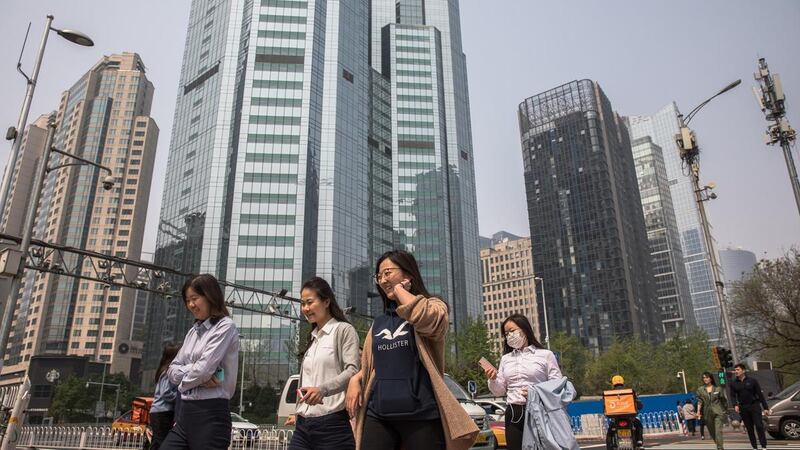China's third-quarter economic growth slowed more than expected and to its weakest pace in almost three decades as the bruising US trade war hit factory production.
Gross domestic product rose just 6 per cent year-on-year, marking a further loss of momentum for the economy from the second quarter's 6.2 per cent growth.
China's trading partners and investors are closely watching the health of the world's second-largest economy as the trade war with the US fuels fears about a global recession.
Asian stocks stumbled after the data, reversing gains made on the UK and European Union striking a long-awaited Brexit deal.
Downbeat Chinese data in recent months has highlighted weaker demand at home and abroad.
Nie Wen, a Shanghai-based economist at Hwabao Trust, pinned the worse-than-expected GDP growth mainly to weakness in export-related industries, especially the manufacturing sector.
"Given exports are unlikely to stage a comeback and a possible slowdown in the property sector, the downward pressure on China's economy is likely to continue, with fourth-quarter economic growth expected to slip to 5.9 per cent," Mr Nie said.
"Authorities will loosen policies, but in a more restrained way."
The third-quarter GDP growth was the slowest since the first quarter of 1992, the earliest quarterly data on record, and missed forecasts for 6.1 per cent growth in a Reuters poll of analysts. It was also at the bottom end of the government's full-year target range of 6 per cent to 6.5 per cent.
In a briefing after the GDP data release, Mao Shengyong, a spokesman for China's statistics bureau, announced Beijing's plans to bring forward some 2020 special local government bond issuance to this year, in a move to spur regional infrastructure investment.
Even recent signs of breakthrough in the protracted trade war between Beijing and Washington are unlikely to change the economic outlook any time soon.
US President Donald Trump said last week the two sides had reached agreement on the first phase of a deal and suspended a tariff hike, but officials warn much work still needed to be done.
A slide in China's exports accelerated in September while imports contracted for a fifth straight month.
The drags on demand, both domestic and global, have hit several key parts of the economy with weakness seen in freight shipments, factory power generation, employment and entertainment spending.
The International Monetary Fund has warned the US-China trade war will cut 2019 global growth to its slowest pace since the 2008-2009 financial crisis.
Beijing has relied on a combination of fiscal stimulus and monetary easing to weather the current slowdown, including trillions of yuan in tax cuts and local government bonds to fund infrastructure projects and efforts to spur bank lending.







